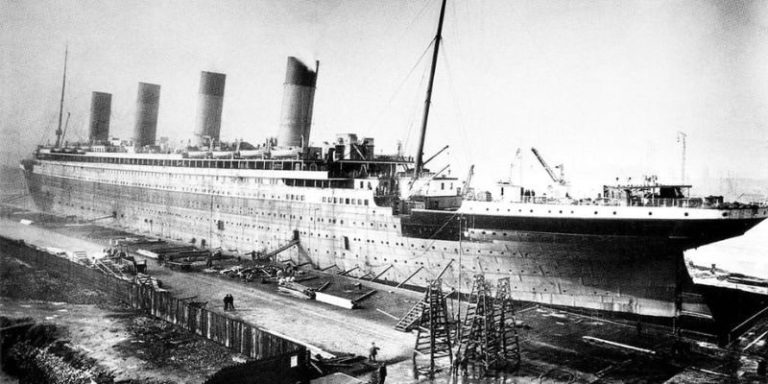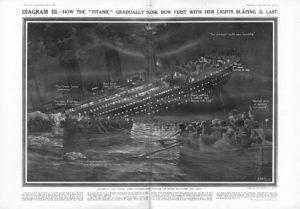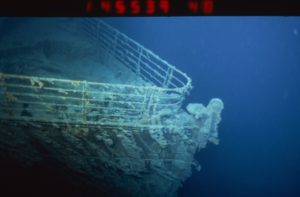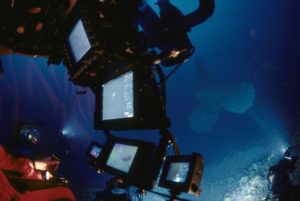A Tour of the Titanic: An Old Shipwreck and a New Tourist Attraction
The Titanic sank more than a century ago, but some people still want to tour the wreckage.
By: Kelli Ballard | September 21, 2022 | 1048 Words

(Photo by: Pictures from History/Universal Images Group via Getty Images)
Have you seen the movie Titanic? How would you like to take a tour of the real site where the ship sank? You can, but it will cost $125,000. A company called OceanGate runs yearly dives allowing researchers and curiosity seekers to take part in assessing the damage of the Titanic where it rests on the ocean floor. But it’s not an easy journey. Once in the water, it takes about two-and-a-half hours to get to the wreckage and only three people can fit in the submersible vessels. In all, it’s about an eight-to-ten-hour tour. However, for those people who can’t go on the journey, new information is being brought back about the century-old shipwreck.
The Titanic
The RMS Titanic was a luxury steamship that was supposed to be unsinkable. It left on April 10, 1912, from Southampton, England, and made several stops before beginning its final journey to New York. But then, on April 15, the ship sank. The vessel carried 2,240 passengers and crew members, but there were only 705 survivors.

(Photo by Universal Images Group/Getty Images)
There are many theories as to why the Titanic sank, aside from hitting an iceberg, of course. Some say it was cursed to begin with. On the first day of departure, a small fire had to be put out in one of the coal bunkers. Although that was common for the time, some believe the fire was never fully extinguished and grew to an uncontrollable level. The crew then had to attempt “a full-speed crossing” making them unable to avoid the iceberg, according to History.com. Also on departure day, the Titanic narrowly avoided colliding with the S.S. New York, an American ship, further fanning the theory that the Titanic was cursed.
On April 14, the Titanic received reports about ice in the area from other ships, but the luxury liner had not experienced anything but calm seas and clear skies. A lookout around 11:30 p.m. saw an iceberg that seemed to appear out of the mist and rang the warning bell. The engines were reversed so that the ship turned sharply and didn’t run into the iceberg directly. However, instead of just grazing the huge chunk of ice, as was first thought because of the small ice chips landing on the forward deck, a 300-foot gash had been dug out of the hull below the ship’s waterline.
Not long after discovery, evacuation began, but it was very disorganized. The lifeboats were designed to hold 65 people each, but the first one left with only 28. Unfortunately, this was repeated with many of the lifeboats; people were scared and eager to get away from the sinking ship so the lifeboats left before they even came close to their capacities.
Tim Maltin, a British historian and author, believes the ship sank because of a mirage that kept the crew from seeing the iceberg. He explained that most of the passenger testimonies said it was “the clearest night in history” even though the lookouts said there was a “haze” around the horizon. “This led me to the discovery that there was a haze, and it was the clearest night in history because there is a thing called a miraging haze which looks like a haze but it’s not caused by water droplets like a normal haze,” he described. Maltin continued:
“It’s caused by the amount of air you can see through on a really really clear night.
“So if you can see 80 miles when you can normally see 20, they would get this haze effect which was really light scattering in the molecules in the depth of air they could see through.”
The Titanic Today

(Photo by Xavier DESMIER/Gamma-Rapho via Getty Images)
Today, the wreckage rests about two-and-a-half miles below the surface of the Atlantic Ocean. Although it sank in 1912, it wasn’t until 1985 that its remains were found by retired US Navy officer and oceanographer, Dr. Robert Ballard. In 1998, Deep Ocean Expeditions made its first deep-sea dive to see the Titanic, and then later, to honor the 100th anniversary of the tragedy, the company announced a final trip in 2012. The company offered people the opportunity to see the site for $59,000 a ride.
OceanGate, although passengers will pay much more, is doing the same thing. The company has produced some amazing images, showing the wreckage much clearer than we have seen before. Rory Golden of OceanGate said that the footage actually shows an inscription of the ship’s anchor maker, Hingley & Sons. “It is exciting that, after so many years, we may have discovered a new detail that wasn’t as obvious with previous generations of camera technologies,” he said.
But continued voyages to the wreckage may come to an end. Many historians and researchers argue that such trips threaten a historical relic that is already fragile. Because there is no controlled access to the site and it is located in international waters, treasure hunters have already taken thousands of artifacts.
Edward Kamuda, the president of the Titanic Historical Society, said it’s harmful to make the wreckage a tourist destination:
“To us it’s a grave site – why disturb it further? One couple went down and got married at the site. There will be cruise ships going out there for the anniversary and drinking champagne and that sort of thing … Is that an appropriate way to commemorate the sinking of this ship and the loss of all those lives?”

(Photo by Xavier DESMIER/Gamma-Rapho via Getty Images)
The site is also being damaged by bacteria and erosion. “The ship’s iconic crow’s nest has fallen, and the railing along the bow of the ship could break apart any day,” The Vintage News reported.
“I think one thing that captures people is a direct link to this almost mythological maritime character,” Rob McCallum of Deep Ocean Expeditions told National Geographic. “Being able to go and actually see it and pay homage to it, if you like, is an incredible aspect of this expedition.”
Should the site be left in peace, or should explorations continue to see what can be learned before the wreckage is gone forever?
















